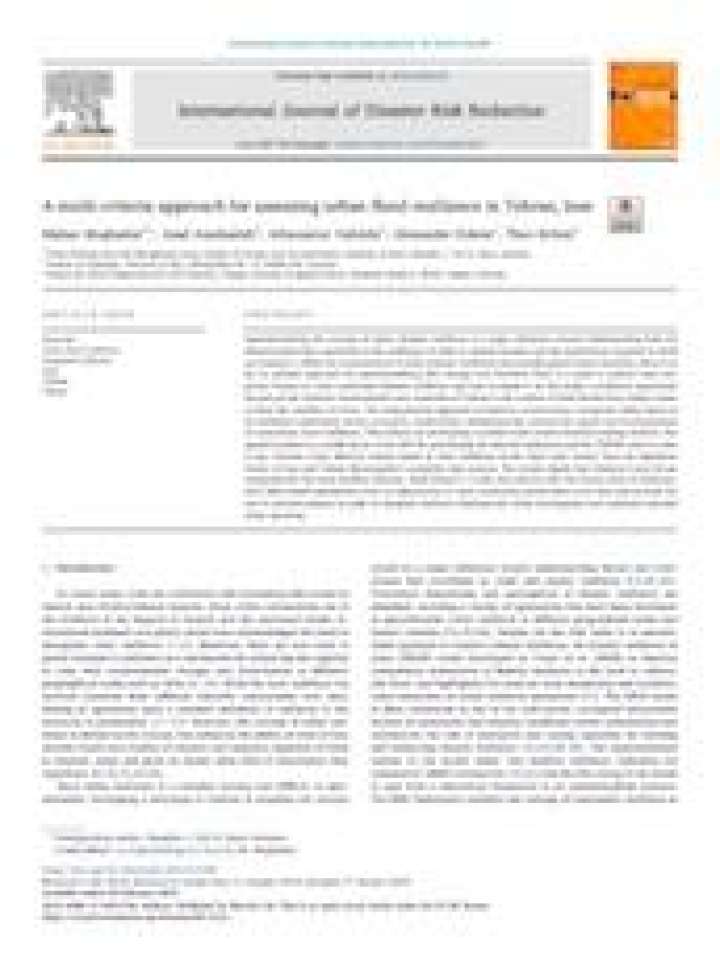A multi-criteria approach for assessing urban flood resilience in Tehran, Iran
Operationalizing the concept of urban disaster resilience is a major milestone toward understanding both the characteristics that contribute to the resilience of cities to natural hazards and the interactions required to build and sustain it. While the measurement of urban disaster resilience has recently gained much attention, there is so far no optimal approach for operationalizing this concept and therefore there is a need to conduct more empirical studies on what constitutes disaster resilience and how to assess it.
In this study, a resilience assessment focuses on the inherent characteristics and capacities of Tehran in the context of flash floods from surface water or from the overflow of rivers. The measurement approach is based on constructing a composite index based on six dimensions of community flood resilience: social, economic, institutional, infrastructural, community capital and environmental. This follows by developing a hybrid multi-criteria decision-making method.
The results clarify that Districts 6 and 22 are comparatively the most resilient districts, while District 1 is the only district with the lowest level of resilience. Such place-based assessments have an opportunity to track community performance over time and provide a method to decision-makers in order to integrate resilience thinking into urban development and resilience-oriented urban planning.
Explore further

